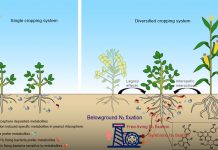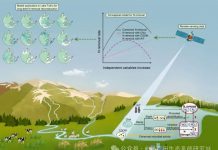Zhang N Xiao X Pei M Liu X Liang YT. Discordant temporal turnovers of sediment bacterial and eukaryotic communities in response to dredging: non-resilience and functional changes. Applied and Enviornmental Microbiology 2016 doi: 10.1128-AEM.02526-16
Abstract
To study the stability and succession of sediment microbial and macrobenthic communities in response to anthropogenic disturbance a time-series sampling was conducted before during and one year after dredging in the Guan River in Changzhou China which was performed with cutter suction dredgers from April 10 to May 20 2014. The microbial communities were analyzed by sequencing bacterial 16S rRNA and eukaryotic 18S rRNA gene amplicons with Illumina MiSeq and the macrobenthic community was identified using a morphological approach simultaneously. Results indicated that dredging disturbance significantly altered the composition and structures of sediment communities. The succession rates of communities were estimated by comparing the slopes of time–decay relationships. The temporal turnover of microeukaryote (w = 0.3251 p < 0.001) was the highest followed by bacteria (w = 0.2450 p < 0.001) and then macrobenthos (w = 0.1273 p < 0.001). During dredging alpha-diversity of both bacterial and microeukaryotic communities were more resistant but beta-diversity was less resistant than that of macrobenthos. After recovery for one year all three sediment communities were not resilient and had reached another alternative state. The alterations in sediment communities’ structure and stability resulted in functional changes in nitrogen and carbon cycling in sediments. Sediment pH dissolved oxygen redox potential and temperature were the most important factors influencing the stability of sediment communities and ecosystem multifunctionality. This study suggests that discordant temporal turnovers and non-resilience of sediment communities under dredging resulted in functional changes which is important for predicting sediment ecosystem functions under anthropogenic disturbances.
IMPORTANCE Understanding the temporal turnover and stability of biotic communities is crucial for predicting the responses of sediment ecosystems to dredging disturbance. Most studies to date focused on bacterial or macrobenthic community only at two discontinuous time points before and after dredging and hence it was difficult to analyze the community succession. This study firstly compared the stability and temporal changes of sediment bacterial micro-eukaryotic and macrobenthic communities at a continuous time course. The results showed that discordant responses of the three communities are mainly related to their different biological inherent attributes and sensitivities to sediment geochemical variables changes with dredging resulting changes of sediment ecosystem multifunctionality.







